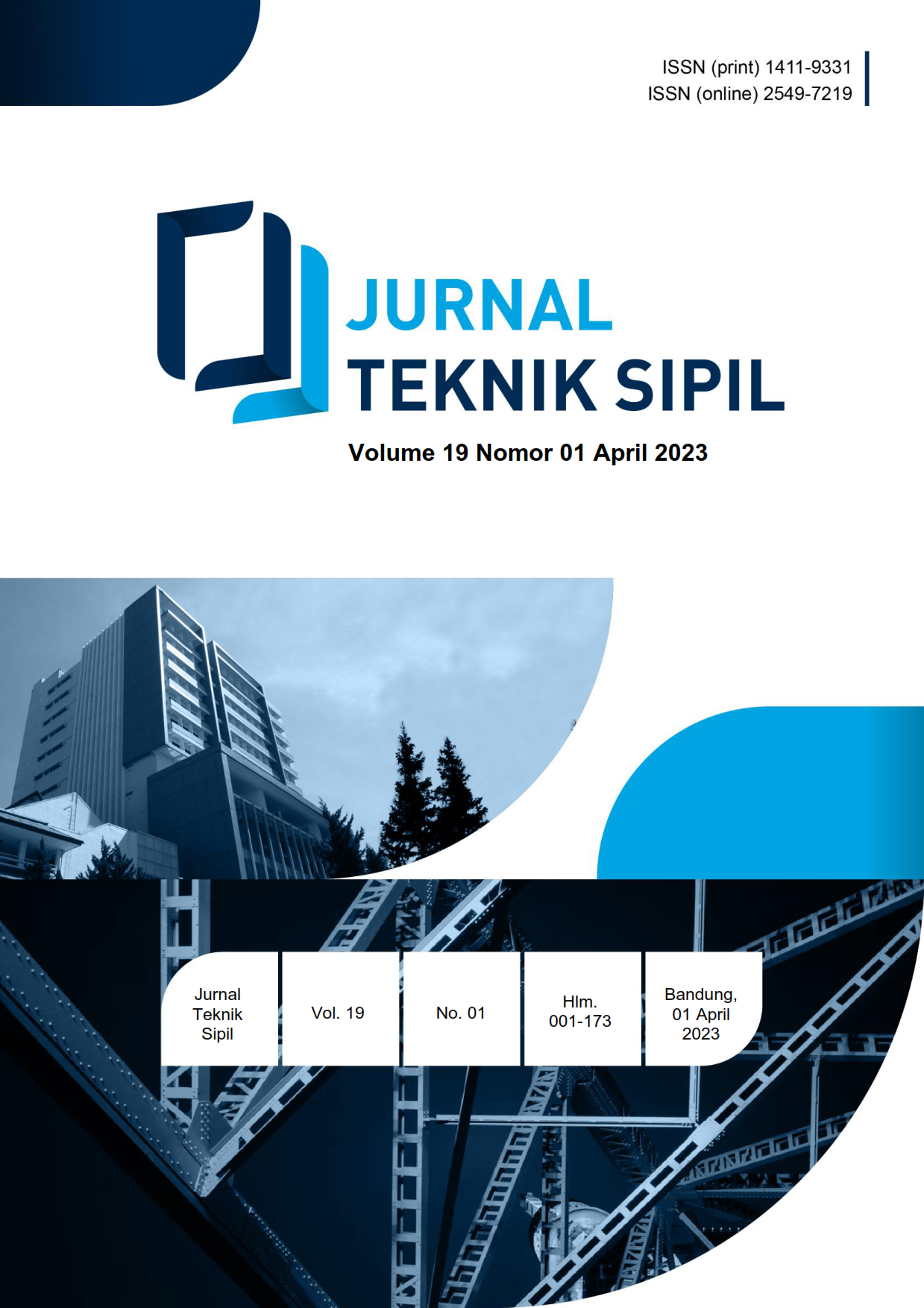Analytical and Experimental Studies on Critical Slip Mechanism of Bolt Structural Steel Connection
DOI:
https://doi.org/10.28932/jts.v19i1.5755Keywords:
Bolt Connection, Bolt Pretension, Critical-SlipAbstract
Indonesia's geographical location makes Indonesia as a country prone to earthquake risks, both tectonic as well as volcanic. The Indonesian National Standard (SNI) 1729:2015 requires bolt connections for steel buildings with a height of more than 38 m must use high-strength bolts (HSB) with pre-tensioning. Snug-tight and pre-tensioned bolted connections are physically no different. Differences will occur when the connection is loaded, namely for pre-tensioned joints, where slip between the plates being joined as a result of the bolt hole size being larger than the bolt diameter will occur when the slip limit strength is exceeded. This study aims to observe the strength and behavior of pre-tensioned bolted joints with increasing loads. The analysis was carried out according to SNI 1729:2015, with data validation through experimental tests using BJ37 plate specimens loaded with concentric axial tension. The connection uses a HSB-A325 M12 standard hole with class A surface preparation. Pre-tension bolts are applied by turn-of-nut. The test results show that the strength of the slip limit (Pslip) is 37.998 kN; this value is 5.7% higher than the analytical result of 35.94 kN. After reaching the slip limit strength, the connection can still accept the load with the bearing force transfer mechanism and reach the connection limit strength (Pu) of 50.197 kN, 32% exceeding the slip limit strength. Turn-of-nut, one of the methods recommended by SNI 1729:2015, is a fairly simple method for pre-tensioning because no special additional tools are required and the required minimum pre-tensioning force can be met by achieving Pslip experimental results not lower than the results of the analysis.Downloads
References
AISC (2016), Specification for Structural Steel Building (ANSI/AISC 360-16), American Institute of Steel Construction, Chicago, Illinois, July 2016.
ASTM (2016), ASTM E8/E8M – 16a Standard Test Methods for Tension Testing of Metallic Materials, American Society for Testing and Material.
Dewobroto, W. (2016), Struktur Baja: Perilaku, Analisis & Desain - AISC 2010 Edisi ke-2, Jurusan Teknik Sipil UPH, Lippo Karawaci, Tangerang.
McCormac, Jack C., Csernak, Stephen F. (2012), Structural Steel Design 5th Edition, Pearson Education, Inc.
Palaeowati, N., Awaludin, A., Siswosukarto, S. (2015), Lateral Load Resistance of Laminated Vaneer Lumber Sengonwooden Joints with Wooden Dowels, Makara Journal of Technology 18(3):143.
Pranata, Y.A., Sulandari, N., Milyardi, R. (2018), Experimental Tests and Analytical Studies of Bearing-Type Axial Steel Connection, MATEC Web of Conferences 215, 01030.
RCSC (2020), Specification for Structural Joints Using High Strenght Bolts, Research Council on Structural Connections, American Institute of Steel Construction, Chicago, Illinois.
Salmon, Charles G., Johnson, John E., Malhas, Faris A. (2020), Steel Structures: Design and Behaviour - Emphasizing Load and Resistance Factor Design 6th Edition, Pearson Education, Inc.
Segui, William T. (2013), Steel Design 5th Edition, Cengage Learning, USA.
Standar Nasional Indonesia (SNI) 1729. (2015), Spesifikasi untuk Bangunan Gedung Baja Struktural, Badan Standarisasi Nasional, Jakarta.
Standar Nasional Indonesia (SNI) 8458. (2017), Metode Uji Pengencangan Baut Mutu Tinggi, Badan Standarisasi Nasional, Jakarta.
Sulandari, N., Milyardi, R., Pranata, Y.A. (2017), Studi Eksperimental dan Analitis Kapasitas Sambungan Baja Batang Tarik dengan Tipe Kegagalan Geser Baut, Jurnal Teknik Sipil, Volume 13 Nomor 1, April 2017.
Downloads
Published
How to Cite
Issue
Section
License
Copyright (c) 2023 Noek Sulandari, Yosafat Aji Pranata, Anang Kristianto

This work is licensed under a Creative Commons Attribution-NonCommercial 4.0 International License.















